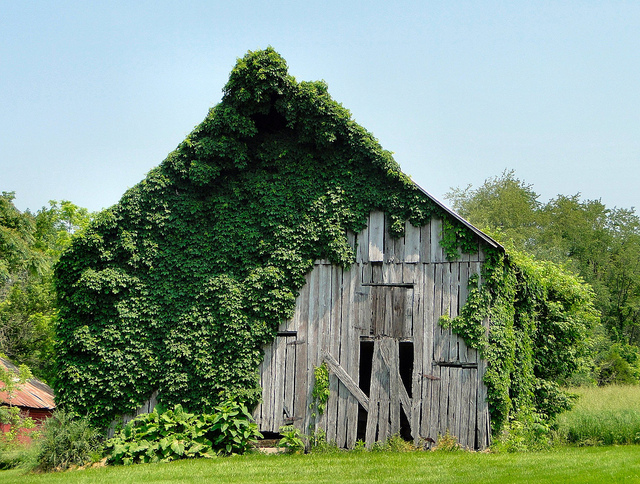Innovation is alive and well.
 Innovation isn’t a thing in itself; rather, it’s a result of something. Set the right input conditions, monitor the right things in the right ways, and innovation weaves itself into the genetic makeup of your company. Like ivy, it grabs onto outcroppings that are the heretics and wedges itself into the cracks of the organization. It grows unpredictably, it grows unevenly, it grows slowly. And one day you wake up and your building is covered with the stuff.
Innovation isn’t a thing in itself; rather, it’s a result of something. Set the right input conditions, monitor the right things in the right ways, and innovation weaves itself into the genetic makeup of your company. Like ivy, it grabs onto outcroppings that are the heretics and wedges itself into the cracks of the organization. It grows unpredictably, it grows unevenly, it grows slowly. And one day you wake up and your building is covered with the stuff.
Ivy doesn’t grow by mistake – It takes some initial plantings in strategic locations, some water, some sun, something to attach to, a green thumb and patience. Innovation is the same way.
There’s no way to predict how ivy will grow. One young plant may dominate the others; one trunk may have more spurs and spread broadly; some tangles will twist on each other and spiral off in unforeseen directions; some vines will go nowhere. Though you don’t know exactly how it will turn out, you know it will be beautiful when the ivy works its evolutionary magic. And it’s the same with innovation.
Ivy and innovation are more similar than it seems, and here are some rules that work for both:
- If you don’t plant anything, nothing grows.
- If growing conditions aren’t right, nothing good comes of it.
- Without worthy scaffolding, it will be slow going.
- The best time to plant the seeds was three years ago.
- The second best time to plant is today.
- If you expect predictability and certainty, you’ll be frustrated.
Innovation is the output of a set of biological systems – our people systems – and that’s why it’s helpful to think of innovation as if it’s alive because, well, it is. And like with a thriving colony of ants that grows steadily year-on-year, these living systems work well. From 10,000 foot perspective ants and innovation look the same – lots of chaotic scurrying, carrying and digging. And from an ant-to-ant, innovator-to-innovator perspective they are the same – individuals working as a coordinated collective within a shared mindset of long term sustainability.
Image credit – Cindy Cornett Seigle
 Mike Shipulski
Mike Shipulski